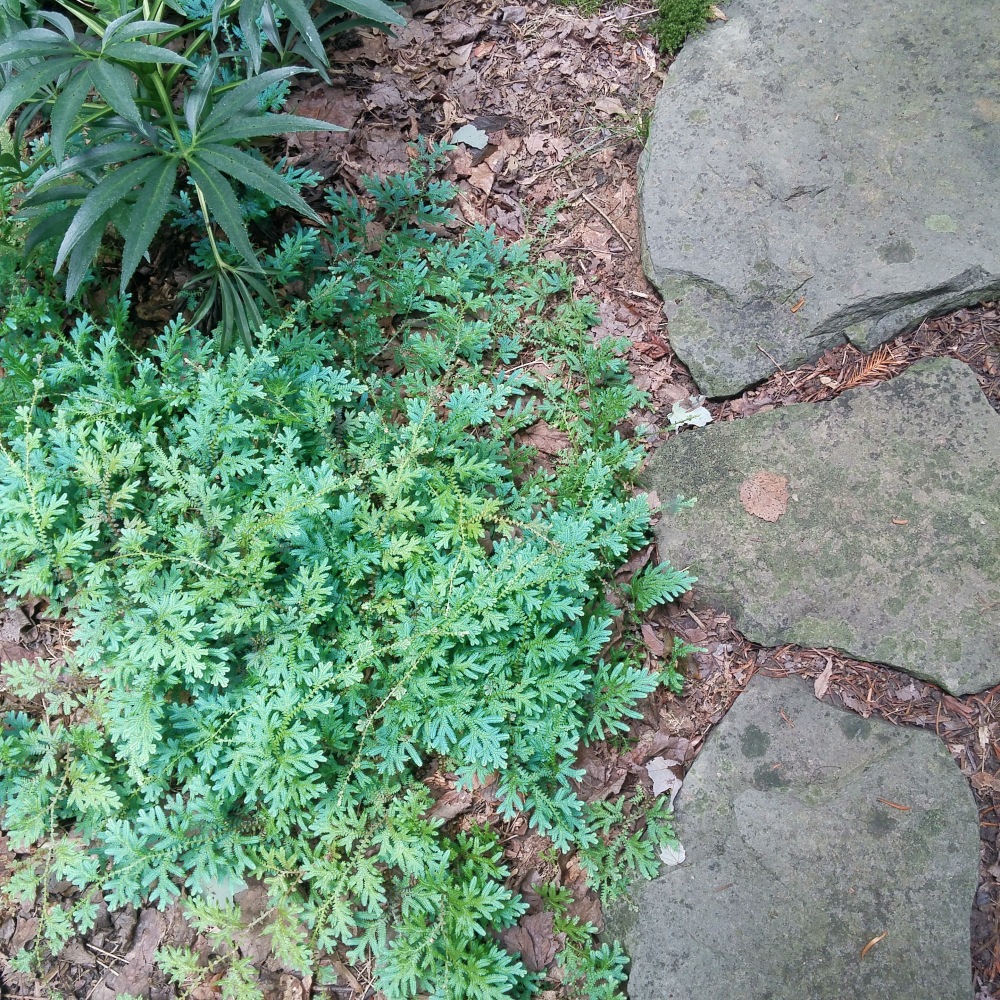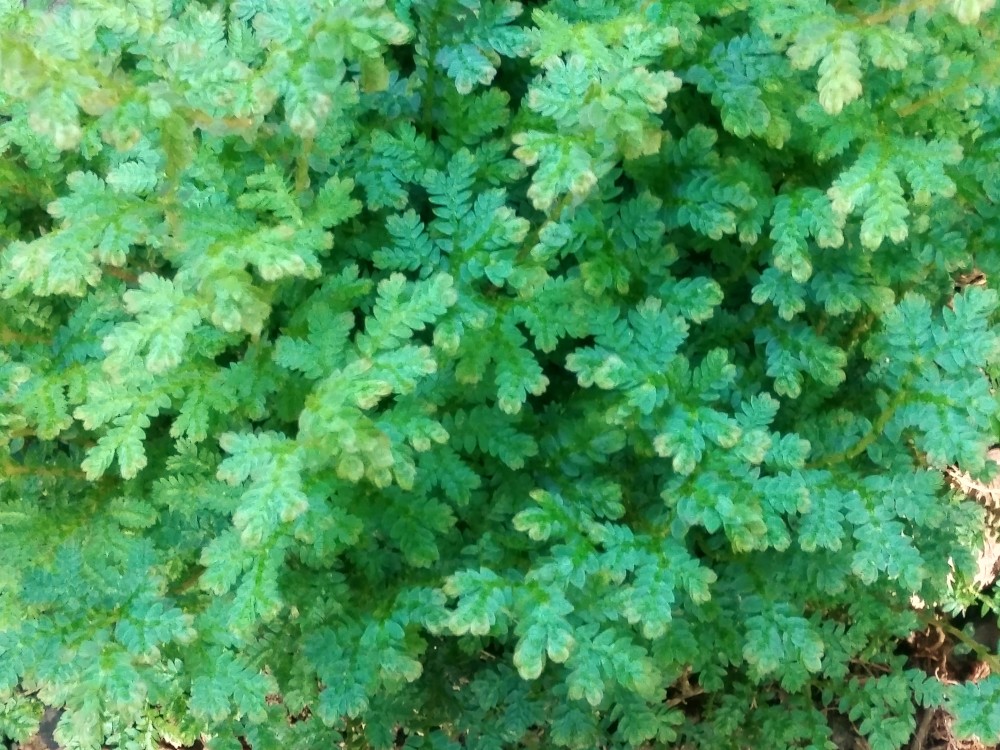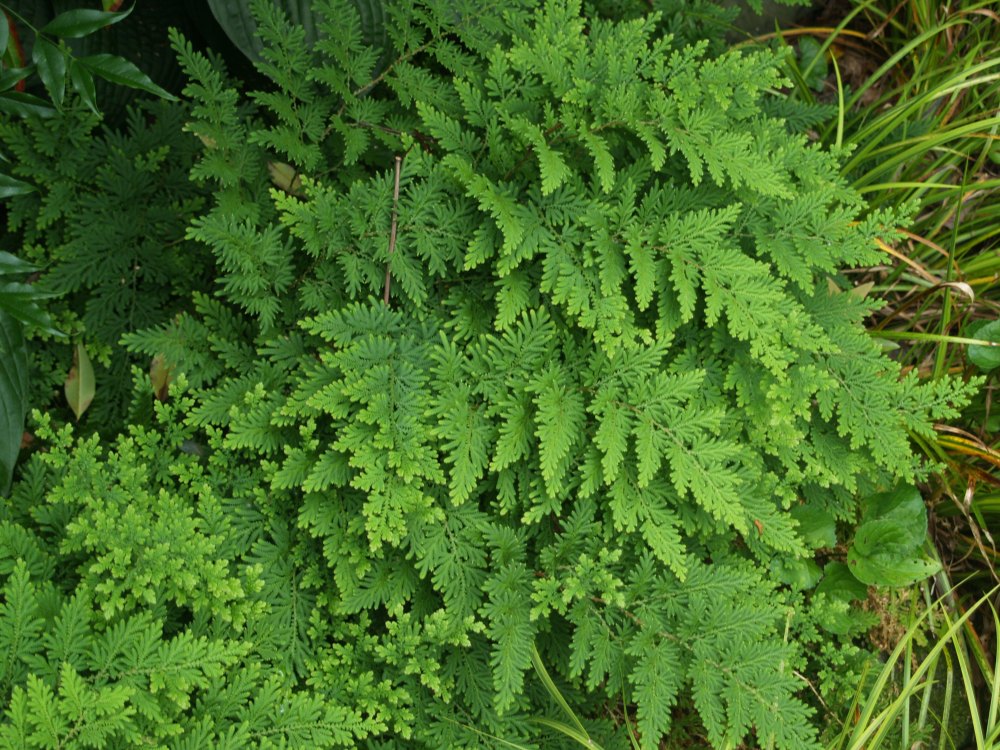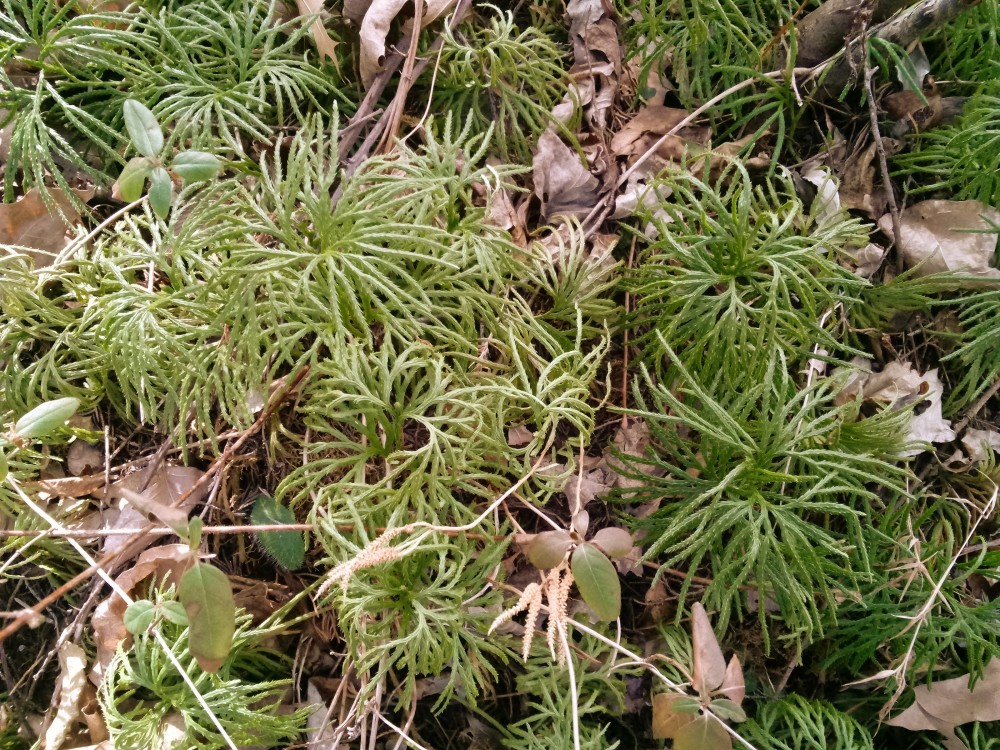An interesting, low growing evergreen caught my eye on a winter afternoon as I walked along the creek in the forest that borders the garden. There are few evergreens in the forest besides the few native hollies and scattered ferns, and I was intrigued that this could be from the family of club and spikemosses.
References confirmed this to be Ground Pine moss (Lycopodium obscurum, above), not a true moss, but a club moss. I’ve planted Arborvitae fern (Selaginella braunii) and Peacock spikemosses (Selaginella uncinata, below) in partially shaded locations with excellent success, so I was inspired to transplant a few pieces of Ground Pine moss into the garden.

With minimal roots and long stems, harvesting was simple, but care was required to maintain contact with moist ground and to cover with leaf litter to increase chances for a successful transplant.

From this same section of forest, Ostrich ferns were transplanted into the garden, where they have thrived and then been transplanted to other parts of the garden. I expect the club mosses to be much slower to become established, and to spread more slowly than the vigorous native fern.

The club and spikemosses have been planted at the edges of shaded planting beds, along stone paths where their textural qualities can be appreciated. I quickly discovered that Peacock spikemoss is most particular to deeper, moisture retentive soils, while Arborvitae fern is more tolerant of drier conditions (but not dry). From its native habitat, I’m guessing that Ground Pine will require moist soil, so it has been located in close proximity to Peacock mosses.

I know it as ” Running Cedar” and it is very difficult to transplant, mainly because of its root network. Keep it moist and good luck!
The stems of Ground Pine, or Running Cedar, are similar to Peacock moss, though a bit woodier. I’ve transplanted Peacock moss successfully, so I’m hopeful.
Let us know how you do. Seems like I read about this once when considering the same thing and it said those need a specific environment and don’t often transplant successfully. But nothing ventured nothing gained!
I hope that I have multiplied the odds for success by planting across the path from the similarly shallow rooted Peacock moss. I suppose I will know success or failure within a month or two, though I expect growth to be slow.
I’m trying to establish Peacock Moss along one of my pathways; wish me luck! It is so beautiful.
That is surprisingly abundant in the San Lorenzo Valley. I say it is surprising because the Santa Clara Valley just a few miles away is chaparral.
It appears that there are a number of club and spikemosses native to California, with some similar in appearance to Ground Pine, but tolerant of dry conditions.
Yes, I am sometimes reminded of that here. I still find it interesting because of the dry conditions just a few miles away. In my former neighborhood, which was actually a big drier than most because it is in the rain shadow, our annual rainfall is about a foot. Just past the summit, on the coastal side of the mountains, the annual rainfall is at least three times that much, with some areas getting even more. some of the canyons stay quite damp.